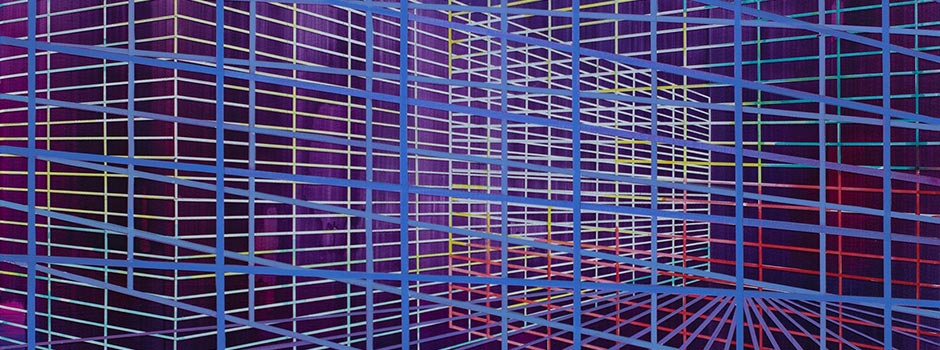
SOLO EXHIBITION AT LAWRIE SHABIBI Driss Ouadahi: Extra Muros
May 10, 2019 INSPO, Exhibition
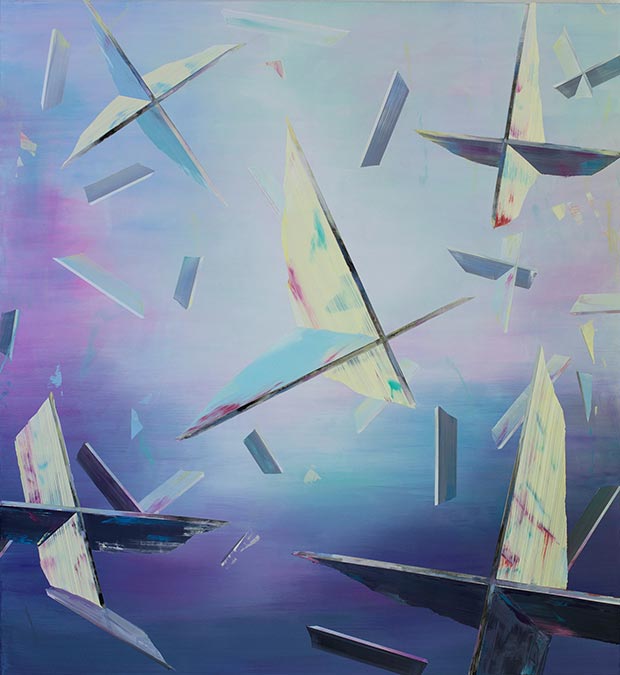 Driss Ouadahi, Eclat, 2017, Acrylic and oil on canvas, 130 x 120 cm / Courtesy of Lawrie Shabibi and the artist
Driss Ouadahi, Eclat, 2017, Acrylic and oil on canvas, 130 x 120 cm / Courtesy of Lawrie Shabibi and the artist
Lawrie Shabibi welcomes back Dusseldorf-based painter Driss Ouadahi for Extra Muros (outside the walls), his third solo exhibition with a series of new paintings, which mark a departure from his work of the last decade, alongside earlier paintings that show his trajectory over the last decade and a half. Whilst Ouadahi’s earlier works (shown in the two previous exhibitions at the gallery) demonstrate social and political concerns, his new works shift from social structures to exercises in geometry and light, bringing his practice full circle.
Following a visit to Algeria fifteen years ago, Ouadahi’s first return home since leaving to study in Dusseldorf, his paintings were predicated around the politics of class, religion, and ethnicity. The physical boundaries in the city of Algiers and the sense of otherness affected him on that trip, and the first works he made thereafter were of heavy concrete modernist buildings: Postwar faceless housing estates, as present in Algeria as they are in France and metropolitan areas of other European countries, which segregate the societies that dwell within them from the surrounding urban fabric. Ouadahi’s fence paintings, his underground paths and his urban landscapes all sprang from that experience.
In Extra Muros one of these early works, Carcasse/Heimat (2005) is on view, a large format painting made soon after this trip. A powerful expression of these concerns, with its brutalist alienating architecture and grid with a strong horizontal emphasis, this painting is a precursor of Ouadahi’s urban landscapes of the next decade.
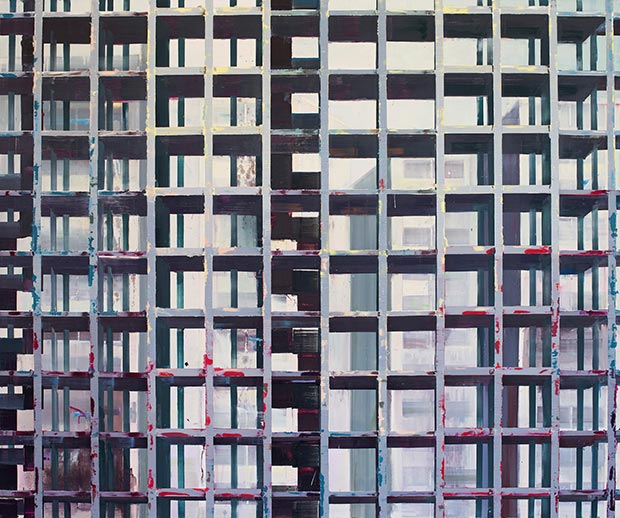 Driss Ouadahi, Carcasse Heimat, 2005, Oil on canvas, 200 x 240 cm / Courtesy of Lawrie Shabibi and the artist
Driss Ouadahi, Carcasse Heimat, 2005, Oil on canvas, 200 x 240 cm / Courtesy of Lawrie Shabibi and the artist
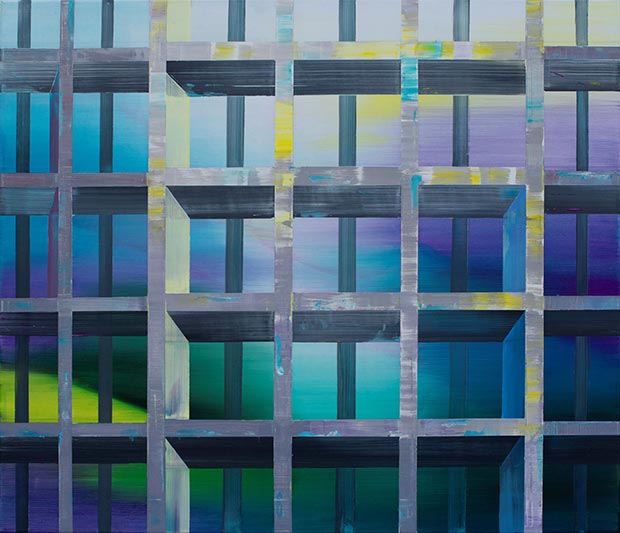 Driss Ouadahi, Carcasse enchantee I, 2019, Oil on canvas, 60 x 70 cm / Courtesy of Lawrie Shabibi and the artist
Driss Ouadahi, Carcasse enchantee I, 2019, Oil on canvas, 60 x 70 cm / Courtesy of Lawrie Shabibi and the artist
 Driss Ouadahi, Carcasse enchantee II, 2019, Oil on canvas, 60 x 70 cm / Courtesy of Lawrie Shabibi and the artist
Driss Ouadahi, Carcasse enchantee II, 2019, Oil on canvas, 60 x 70 cm / Courtesy of Lawrie Shabibi and the artist
Since late 2018 onwards Ouadahi sought to rebuild his method of painting, but without leaving his general concept. In his abstract sketches and painterly experiments of 2017, Ouadahi attempts to shatter his previous practice - Tenir sur un fil and Funambule resemble his earlier urban landscape paintings. Translucide (2018) points to his new direction. Stripping away all recognisable traces of urban settings, focusing instead on light and transparency, this work is devoid of social commentary, more about engendering a kind of feeling through visual sensation. Finally, Ouadahi’s latest works remove the frontal grid altogether.
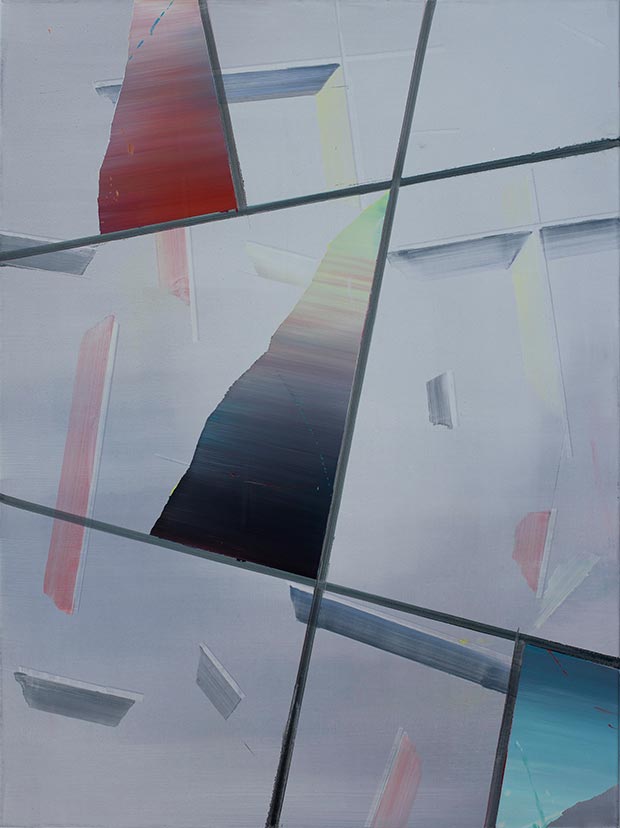 Driss Ouadahi, Tenir sur un fil, 2017, Oil on canvas, 80 x 60 cm / Courtesy of Lawrie Shabibi and the artist
Driss Ouadahi, Tenir sur un fil, 2017, Oil on canvas, 80 x 60 cm / Courtesy of Lawrie Shabibi and the artist
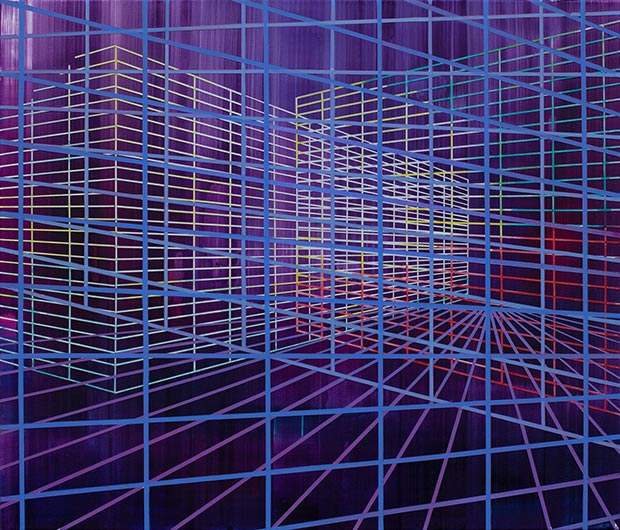 Driss Ouadahi, Funambule, 2019, Oil on canvas, 60 x 70 cm / Courtesy of Lawrie Shabibi and the artist
Driss Ouadahi, Funambule, 2019, Oil on canvas, 60 x 70 cm / Courtesy of Lawrie Shabibi and the artist
 Driss Ouadahi, The cube, 2019, Oil on canvas, 60 x 70 cm / Courtesy of Lawrie Shabibi and the artist
Driss Ouadahi, The cube, 2019, Oil on canvas, 60 x 70 cm / Courtesy of Lawrie Shabibi and the artist
The titles of two large works in the exhibition, Diaphane and Ethereal, are as descriptive of the subjects as they are of Ouadahi’s state of mind and the maturation of his practice. Ouadahi creates luminous, transparent, impossible spaces. These works are poetic, emotional, and highlight the process of painting itself and the meditative qualities of the painting and the space it evokes.
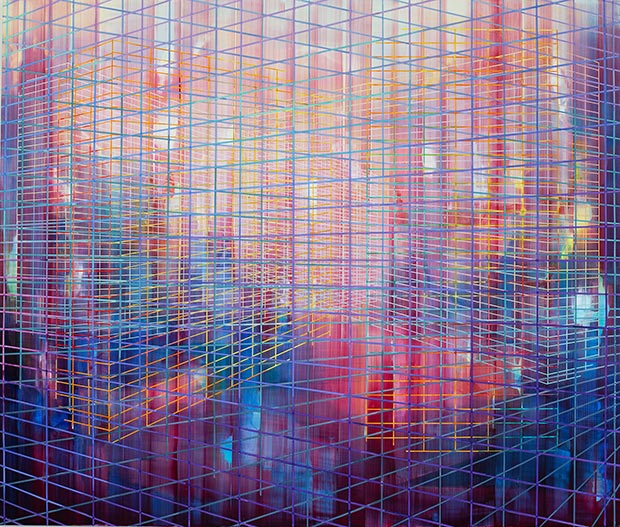 Driss Ouadahi, Diaphane, 201, Oil on canvas, 170 x 200 cm / Courtesy of Lawrie Shabibi and the artist
Driss Ouadahi, Diaphane, 201, Oil on canvas, 170 x 200 cm / Courtesy of Lawrie Shabibi and the artist
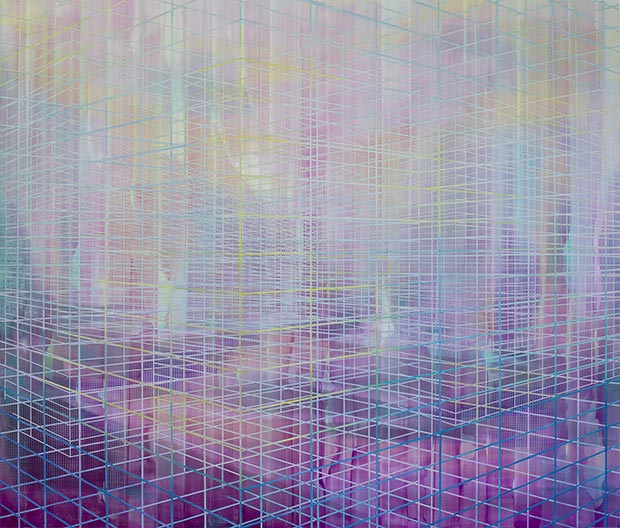 Driss Ouadahi, Ethereal, 2019, Oil on canvas, 170 x 200 cm / Courtesy of Lawrie Shabibi and the artist
Driss Ouadahi, Ethereal, 2019, Oil on canvas, 170 x 200 cm / Courtesy of Lawrie Shabibi and the artist
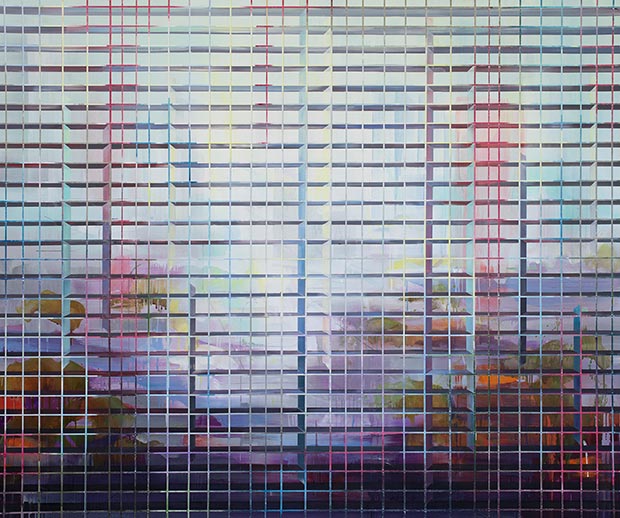 Driss Ouadahi, Translucide, 2018, Oil on canvas, 150 x 180 cm / Courtesy of Lawrie Shabibi and the artist
Driss Ouadahi, Translucide, 2018, Oil on canvas, 150 x 180 cm / Courtesy of Lawrie Shabibi and the artist
The artist is a painter, originally trained as an architect. Ouadahi’s practice reflects both the artist’s North African background and his long ties to the new trends within German painting, especially within his adopted city of Dusseldorf. Born in Casablanca, Morocco, of Algerian parents in 1959, Driss Ouadahi grew up in Algeria. He studied at the Ecole Superieure des Beaux Arts d'Alger before enrolling and subsequently graduating from the Kunstakademie Düsseldorf, the city where he now lives and works.
Ouadahi’s recent solo exhibitions include Systems of Demacration, Von-der-Heydt-Kunsthalle Wuppertal-Barmen, Germany, 2018; Transposition, Caroline Pagès gallery, Lisbon, Portugal, 2016. Notable institutional shows include Klassen Verhältnisse/Phantoms of Perception, Kunstverein, Hamburg, Germany, 2018; Welcome Party, Von-der-Heydt-Museum, Wuppertal, Germany, 2018; Dessinevos Desseins, Musée Public National d'Art Contemporain d'Alger, Algeria, 2018; L'un et L'Autre, Palais de Tokyo, Paris, France, 2018; Beautiful Stranger, Museum De Wieger, Deurne, Netherlands, 2017 and Future of a Promise at Venice Biennale 54, Venice, Italy, 2011.
Ouadahi’s work is in several public collections including Von der Heydt Museum Wuppertal, Germany; Modern Forms, London, UK; FRAC Centre, Orléans, France; Herbert-Weisenburger-Stiftung, Rastatt, Germany; Museum Kunstpallas Düsseldorf, Germany; Nadour Collection; Barjeel Art Foundation, Sharjah, UAE; Kamel Lazaar Foundation, Istanbul, Turkey; and Stadtsparkasse Baden-Baden, Germany.
In 2014 Ouadahi received the Grand Prix Léopold Sédar Senghor Prize at the 11th edition of Dak’Art, the Biennial of Contemporary African Art in Dakar, Senegal.
Lawrie Shabibi is a contemporary art gallery housed in Dubai's Alserkal Avenue. The gallery supports the long-term development of the careers of young international contemporary artists with a focus on those from the Middle East and North Africa. The gallery also organizes art historical exhibitions working with an older generation of artists from the region. Liaising with curators, institutions, museums and collectors the gallery has successfully introduced international artists to the region whilst at the same time presented Middle Eastern artists to the international contemporary arts community. By holding a regular programme of exhibitions, screenings and talks, publishing catalogues and participating in international art fairs, Lawrie Shabibi has in the space of eight years been a forerunner in the development of the contemporary art scene in Dubai.
Comments
Add a comment